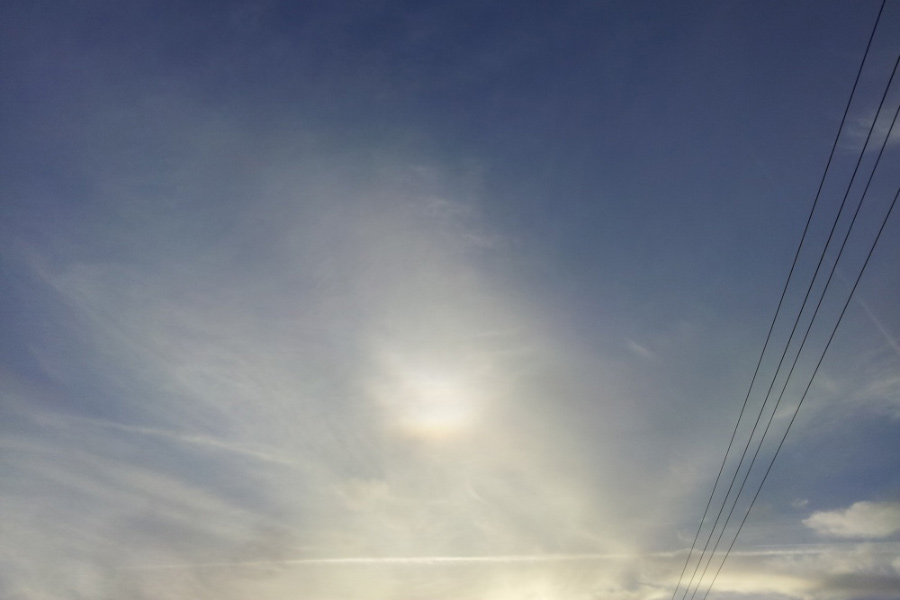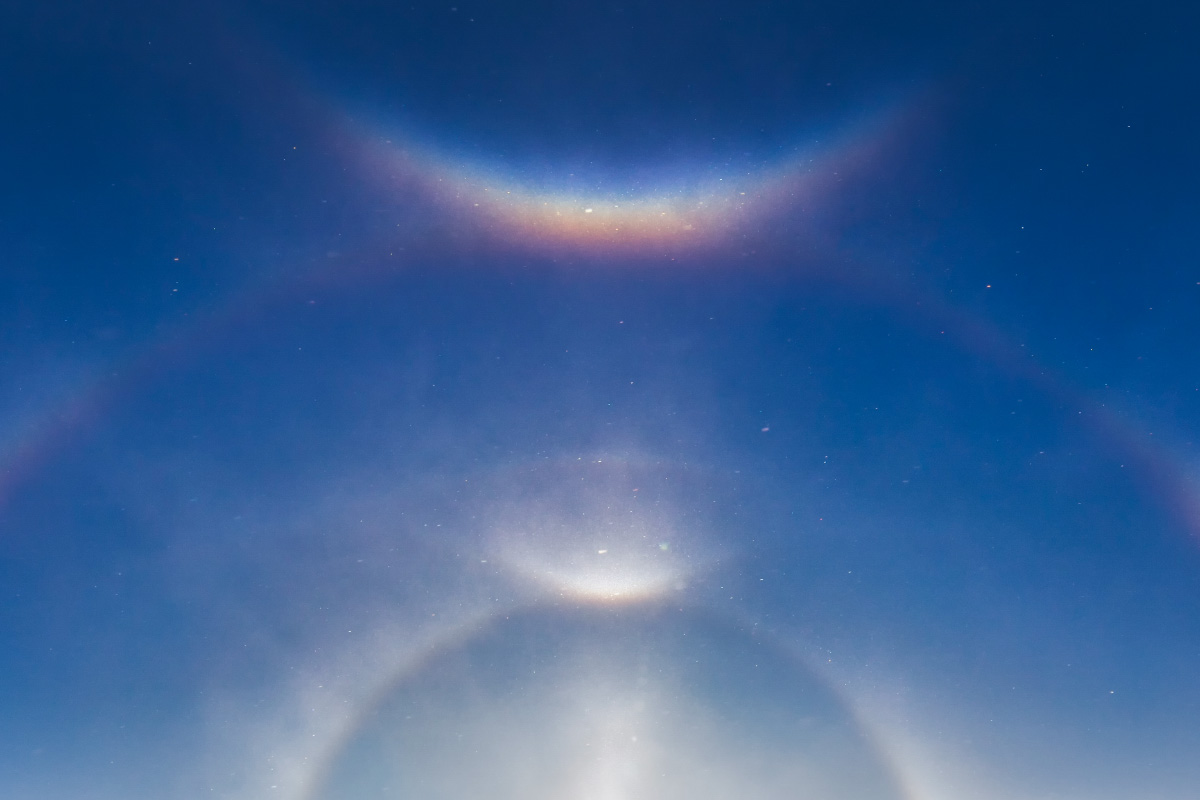Description
For each appearance of the parry arches, there are different light paths. The simulation shows the upper concave and upper convex parry arch together.
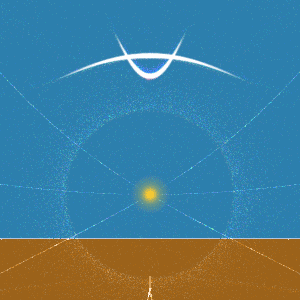
Crystal Type:
- Columnar Crystals
- doubly oriented
- Refraction on 2 side faces
Occurrence:
- quite rare (2-6 days a year)
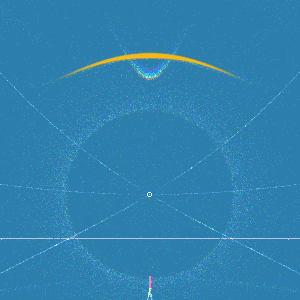

EE27A - Upper Concave Parry Arc


EE27B - Lower Concave Parry Arc
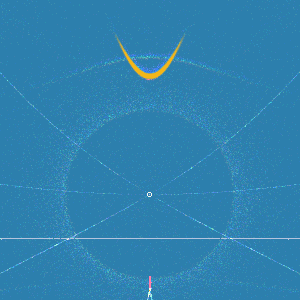

EE27C - Upper Convex Parry Arc
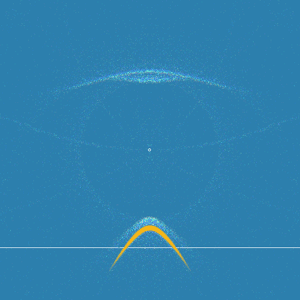

EE27D - Lower Convex Parry Arc
The parry arc changes its shape with the sun's altitude. It is mainly observed at solar altitudes between 15° and 40°. Then it appears as a concave arc between the two branches of the upper tangent arc or above the circumscribed halo. At a very low solar altitude, the arc is convex towards the sun. The parry arc is a relatively faint colorful arc. Towards the sun, it is orange-red and slightly bluish on the outside. When the sun is very low or very high, the parry arc becomes so faint that it can hardly be seen. In rare cases, at very high solar altitudes, a lower parry arc can also occur. It is located at about 50° solar altitude below the 22° halo and touches it at a solar altitude of 71°. Whenever an exceptionally bright tangent arc or circumscribed halo is visible, there are good chances that the parry arc will also appear.
Simulation
Betätige den Slider, um die Sonnenhöhe zu ändern.
Origin
For the formation of the parhelic arc, the ice crystals must be double-oriented. Double-oriented means that not only is the main axis of the columnar crystals oriented horizontally, but additionally the upper and lower prism faces are aligned parallel to the horizon. Crystals with such orientation are rarely found in large numbers. The path of light corresponds to the upper tangent arc. The light enters the upper horizontal prism face and exits from the second next prism face.

